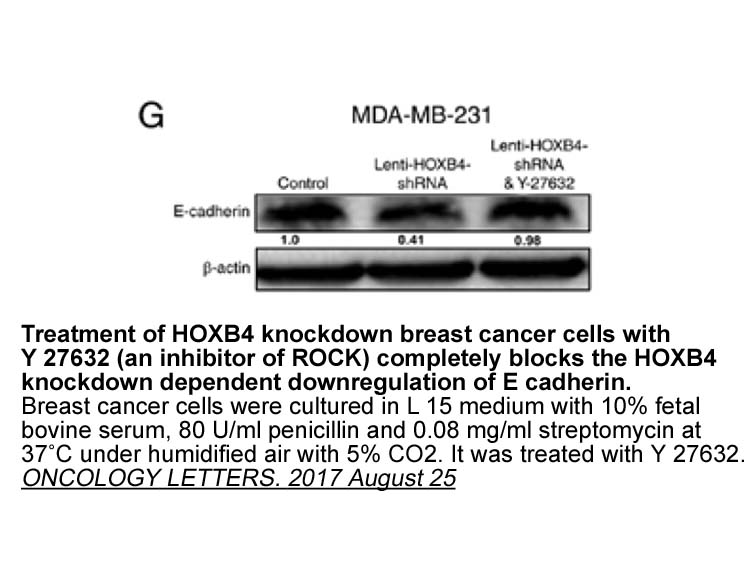Archives
br Iterative design approach overview An iterative
Iterative design approach overview
An iterative design strategy is used to identify a peptidase-resistant reporter that acts as an efficient substrate for kinases in cell lysates as well as intact cells (Fig. 1). In this process, small-scale, rationally designed libraries are used to screen peptides and identify peptide bonds that require stabilization in the face of cytosolic proteases while maintaining similar or improved kinetic properties for the targeted kinase. Critical to the method's success is that library members are simultaneously screened for resistance to all cytosolic peptidases and proteases at their relative cellular concentrations. This feature enables a rational redesign of the peptide to improve its lifetime within the harsh intracellular environment in which peptides must be efficiently degraded for recycling of their Ki16198 synthesis (Cullen & Steinberg, 2018; Goldberg & Dice, 1974; Goldberg & St. John, 1976; Wolf & Menssen, 2018). In brief, an initial peptide is selected from the literature and is typically derived from protein regions known to be phosphorylated in vivo or from a known consensus sequence of a kinase (Section 2). The initial peptide is assessed for its time to 50% phosphorylation by the kinase, degradation half-life within a cell lysate, and location of the initial or dominant peptidase cleavage site. A small-scale, rationally designed peptide library is then constructed by replacing the amino acids surrounding the susceptible peptide bond or by modifying the bond itself to enhance peptidase resistance. Care is taken to use replacement residues or bonds that are tolerated by the kinase. The library is screened for phosphorylation by the kinase, degradation in a lysate, and its initial peptidase cleavage site as described above. The process is repeated, with each sequential round of redesign yielding a peptide reporter with increased proteolytic resistance and often with significantly improved kinetic constants for the kinase. This strategy has yielded peptides with as much as a 15× greater lifetime in cell lysates (>90min) while sustaining as much as a 7× incre ase in kcat with screening of no more than18 peptides (Proctor et al., 2012a, Proctor et al., 2012b, Proctor et al., 2016; Turner et al., 2016). As such, the method yields an efficient and cost-effective strategy to rapidly develop peptidase-resistant kinase substrates for use in both lysate-based assays and single-cell assays of kinase activity using chemical cytometry.
ase in kcat with screening of no more than18 peptides (Proctor et al., 2012a, Proctor et al., 2012b, Proctor et al., 2016; Turner et al., 2016). As such, the method yields an efficient and cost-effective strategy to rapidly develop peptidase-resistant kinase substrates for use in both lysate-based assays and single-cell assays of kinase activity using chemical cytometry.
Design and synthesis of a small-scale library
Substrate peptides are synthesized containing an amidated C-terminus using TGR resin and standard Fmoc solid phase peptide synthesis (SPPS). All peptides contain an N-terminal fluorescein moiety (carboxyfluorescein; FAM), which is used to enable detection of both the nonphosphorylated and phosphorylated forms of the peptide by capillary zone electrophoresis (CZE). As briefly noted above, the literature serves as a guide for the starting sequence of the initial peptide. For example, FAM-GGAYAAPFKKKA-amide, an Abl TPK substrate, was based on a related sequence acquired from a combinatorial peptide library (Songyang et al., 1995). The sequence, FAM-EDDEYEEV-amide, was utilized for the epidermal growth factor receptor (EGFR) TPK (Guyer, Woltjer, Coker, & Staros, 1994) whereas the peptide, FAM-GRPRAATFAEG-amide, serves as a substrate for Akt and was identified from a peptide library (Alessi, Caudwell, Andjelkovic, Hemmings, & Cohen, 1996). The iterative design strategy outlined in the previous section was then applied to improve specific properties. For example, protease-resistance is an essential property for peptides that will be used to probe intracellular protein kinase activity. Incubation of the parent peptides with cell lysates and analysis by CZE revealed the formation of fragments and thus, by inference, those sites that are particularly sensitive to proteolysis (Section 6.3). Derivatives of the starting peptide were subsequently prepared containing alternative amino acids at the protease susceptible sites. These peptides were subsequently analyzed for their ability to serve as substrates for their respective protein kinases as well as for their resistance to proteolysis.